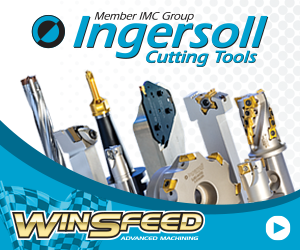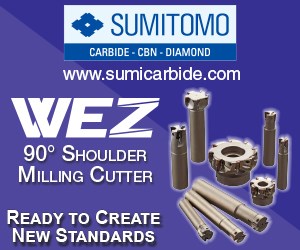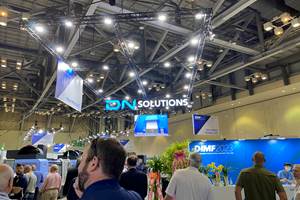6 Ways Electrification is Shifting Automotive Manufacturing
Trends to watch at IMTS: A Tier One transmission supplier weighs in on how hybrid and electric vehicles are changing the requirements for automotive component producers.
Share




The central challenge around electrification in the automotive industry is “the challenge of transformation,” says Vaden Lillard, director of operations for ZF North America’s Gray Court, South Carolina, facility. “When is electrification coming?”
Lillard runs the Tier One supplier’s Gray Court facility in South Carolina, where for 12 years it has manufactured transmissions for internal combustion engines (ICEs) ranging from passenger cars to commercial trucks. Now, the company is in a transitional moment — it is continuing to manufacture ICE transmissions while at the same time producing these systems for hybrid vehicles, and while also looking to serve the emerging electric vehicle (EV) market with products including full electric vehicle drives (EVDs) and reducer gears.
To meet all these fluctuating needs, Lillard says the facility has had to fully embrace its identity as a “Flex Plant.” Its current mix of production provides insights into some ways that vehicle manufacturing is changing in light of electrification:
Greater precision. Electromotors operate at high torque and RPM; keeping an EVD running smoothly requires tight tolerances to maintain efficiency and minimize sound and vibration, which can translate into more stringent requirements for manufactured components compared to those for ICEs.
Higher levels of cleanliness. The electronic components of EV motors require a clean environment for assembly, which means greater attention to HVAC systems and air filters, as well as enclosing spaces, to control airborne particles.
More automation. Current assembly lines at ZF are about 33% automated; Lillard says that for the EV products, lines will be closer to 70% automated. The increase is partly due to workforce competition and the need to offset rising labor costs, but also because of the precision components involved and overall quality requirements.
Increased digitization. ZF has a team of four employees dedicated to digitization and is implementing efforts related to plant management and equipment maintenance. Adding new equipment to serve hybrid and electric vehicles has presented the opportunity to create digital twins of these machines, which will help in future planning.
3D printing to support “speed of change.” ZF relies on 3D printing for items such as robot tooling, but also finds this technology valuable for producing part stand-ins. As the manufacturing floor is reconfigured based on changing demand, 3D printed prototypes can be used to set up and test machines before the real parts arrive, saving time in this changeover.
Adaptability. The Gray Court facility currently manufactures eight- and nine-speed ICE transmissions and reducer gears for EVs; within the next few years it will add production of plug-in hybrid transmissions and full EVDs. It’s a lot to balance under one roof, especially as any changes to the floorplan have to be accomplished without disrupting ongoing production. But staying flexible will serve the plant well up to and through electrification.
“We wanted to leave ourselves available,” Lillard says regarding the setup of the facility. “We’ve put ourselves into a position that we’re ready for what the market asks for.”
About the Author
Stephanie Hendrixson
Stephanie Hendrixson reports on 3D printing technology and applications as executive editor for Additive Manufacturing. She is also co-host of The Cool Parts Show, a video series that highlights unique, unusual and weird 3D printed parts, and co-host and creator of the AM Radio podcast. SUBSCRIBE HERE
Related Content
Faster Programming and Training Helps Automotive Shop Thrive
Features that save on training, programming and cycle times have enabled Speedway Motors to rapidly grow and mature its manufacturing arm.
Read MoreDN Solutions Responds to Labor Shortages, Reshoring, the Automotive Industry and More
At its first in-person DIMF since 2019, DN Solutions showcased a range of new technologies, from automation to machine tools to software. President WJ Kim explains how these products are responses to changes within the company and the manufacturing industry as a whole.
Read MoreNew Coolant Designed for Automotive Parts Production
Choosing the right coolant is critical for productivity, economic efficiency and machining quality.
Read MoreSunnen Products Company Partners With Hendrick Motorsports
The partnership puts the new Sunnen SV-series honing machine in the Hendrick Motorsports engine operation alongside other Sunnen honing and engine building machines.
Read MoreRead Next
Setting Up the Building Blocks for a Digital Factory
Woodward Inc. spent over a year developing an API to connect machines to its digital factory. Caron Engineering’s MiConnect has cut most of this process while also granting the shop greater access to machine information.
Read MoreShop Tour Video: You've Never Seen a Manufacturing Facility Like This
In the latest installment of our “View From My Shop” series, explore Marathon Precision’s multi-process approach to manufacturing, where blacksmiths and hand-forged dies meet state-of-the-art CNC machining. Discover how restoring classic muscle cars and building custom art projects creates a dynamic shop culture — and draws top talent to this unique and innovative metalworking facility.
Read More2025 Top Shops Benchmarking Survey Now Open Through April 30
Modern Machine Shop's Top Shops Benchmarking Survey is now open, offering metalworking and machining operations actionable feedback across several shopfloor and business metrics.
Read More
.jpg;width=70;height=70;mode=crop)
















.jpg)







.png;maxWidth=300;quality=90)








